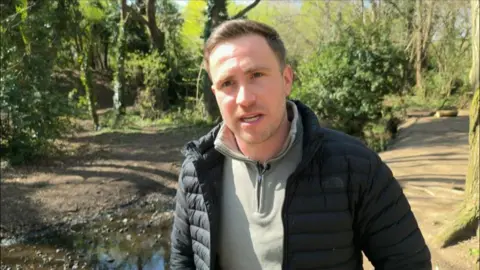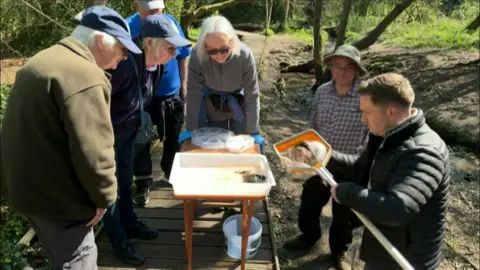Volunteers are tracking the health of city's rivers
 BBC
BBCWith trees casting shade across the puddles and brooks of Moseley Bog, and Tolkien around the corner, volunteers in Birmingham are tracking the health of the city's rivers and streams.
For the last year, Dr James White from the University of Birmingham has been working with about 15 different volunteer groups to teach them how to test and sample the health of the city's waters.
Nearly 100 volunteers have learnt how to identify and count the variety of water species, such as caddisflies and leeches, alongside testing the chemical composition of the water.

Fran Teale said she was amazed to think about the creatures spotted while litter picking in the brook at Senneleys Park.
"Trying to learn the names of the different things, the creatures that move around, and knowing what's underneath your Wellington boots when you're litter picking," she said.
In the last year, volunteers have collected nearly 100 samples of invertebrate life from rivers and streams across Birmingham, more than what was collected by official agencies in all of the last 10 years.
Looking after urban rivers is, in many ways, down to the efforts of volunteers and schemes like this.
"These days with lack of government funding for environmental monitoring... It's more important that volunteers are doing it," explained Richard Orton, a volunteer who looks after Sutton Park.

Organiser Dr White also points out that with many volunteers covering much of the city, there was more chance of picking up on pollution problems and flagging issues to the Environment Agency and Severn Trent.
"Our wonderful volunteer groups are so important, because if we have it in sheer numbers where we can go out, we can take surveys, and we can report issues which we can then flag," he explained.
The biodiversity of many waterways in the city is below what might be expected, with the River Cole's biodiversity level just 6-9% of where it could be.
The hope is that with these teams of dedicated volunteers tracking the health of the city's waterways, this state of affairs can be slowly reversed over time.
Follow BBC Birmingham on BBC Sounds, Facebook, X and Instagram.
